Charles E W Bean, Diaries, AWM38 3DRL 606/259/1 - 1917 - 1927 - Part 11
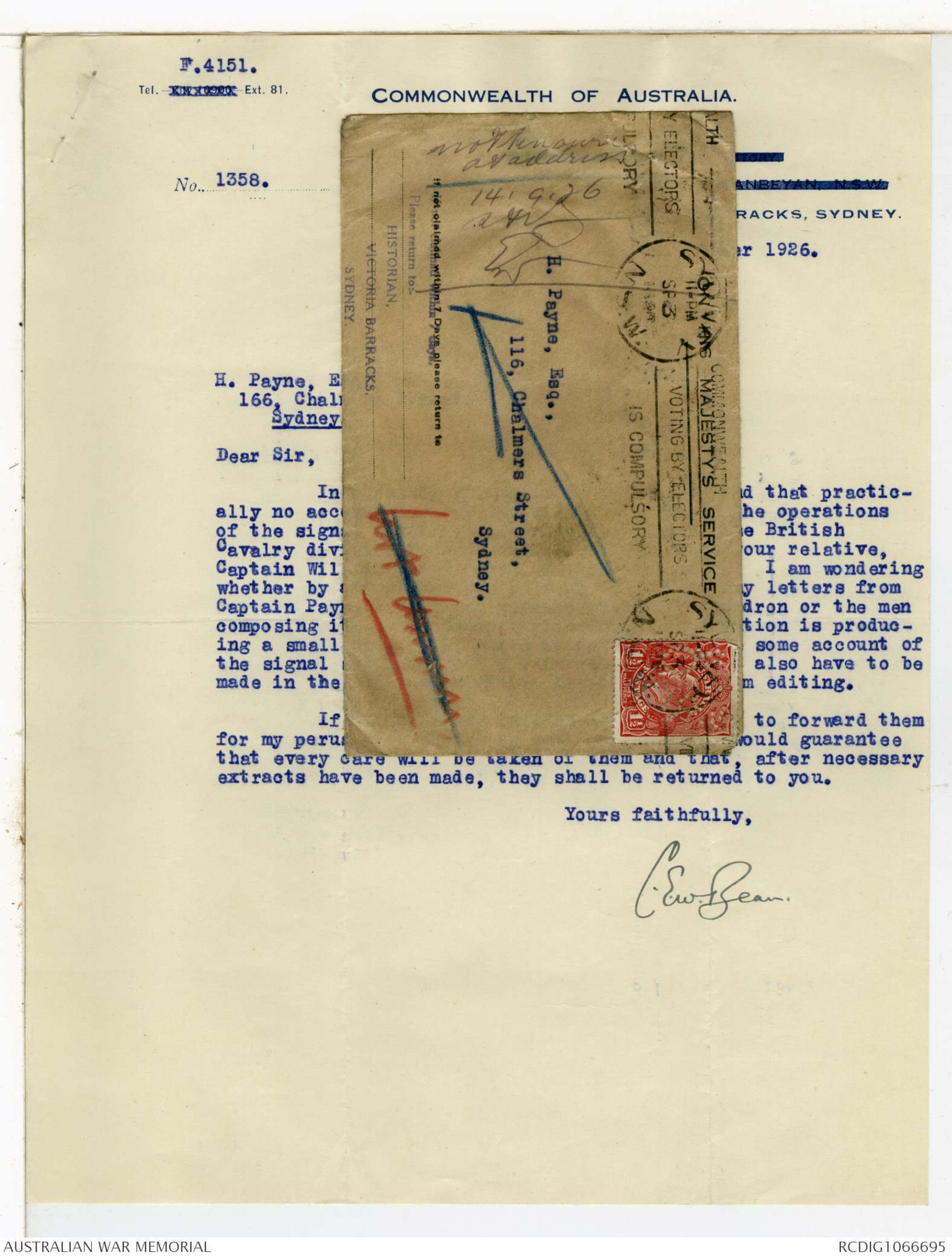
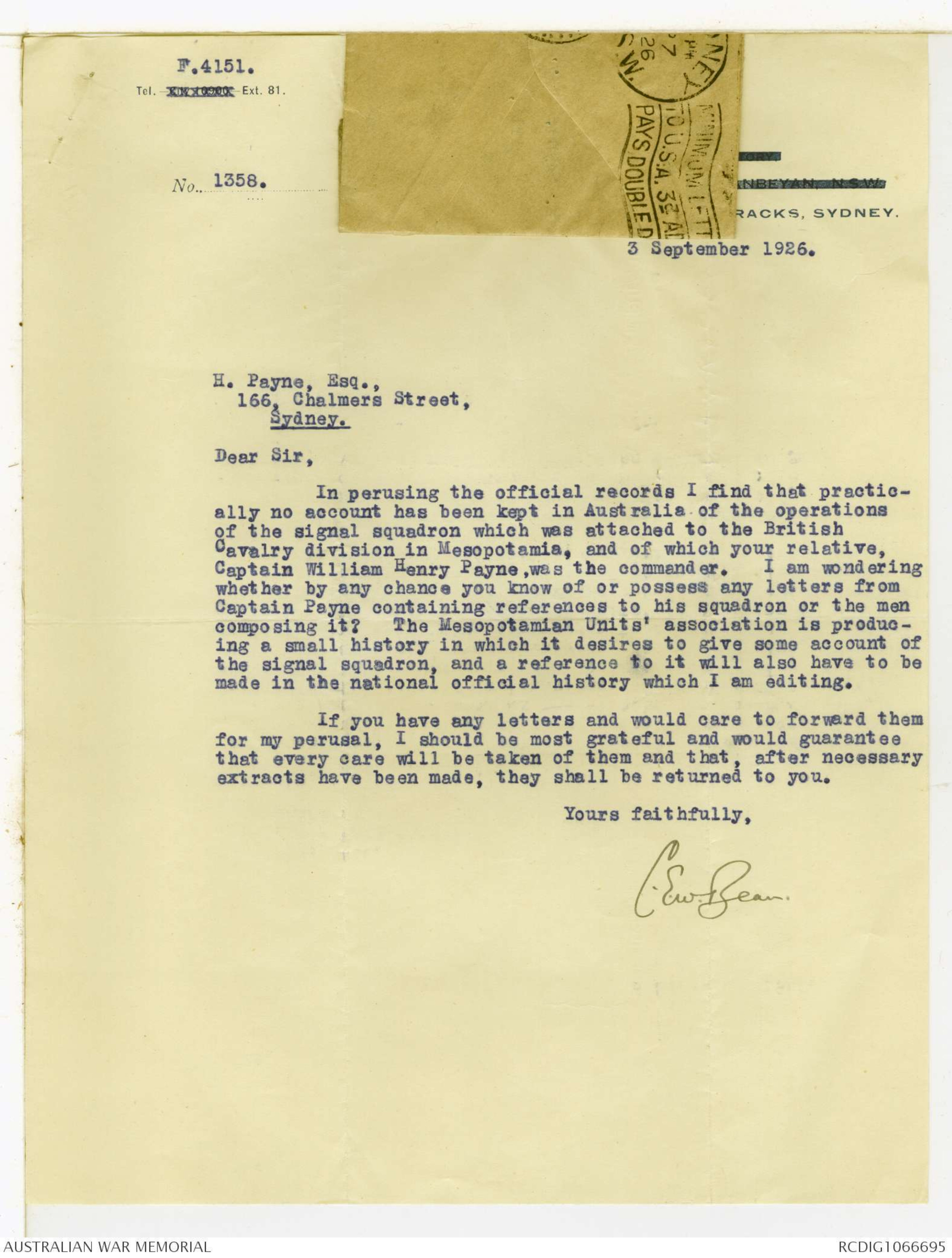


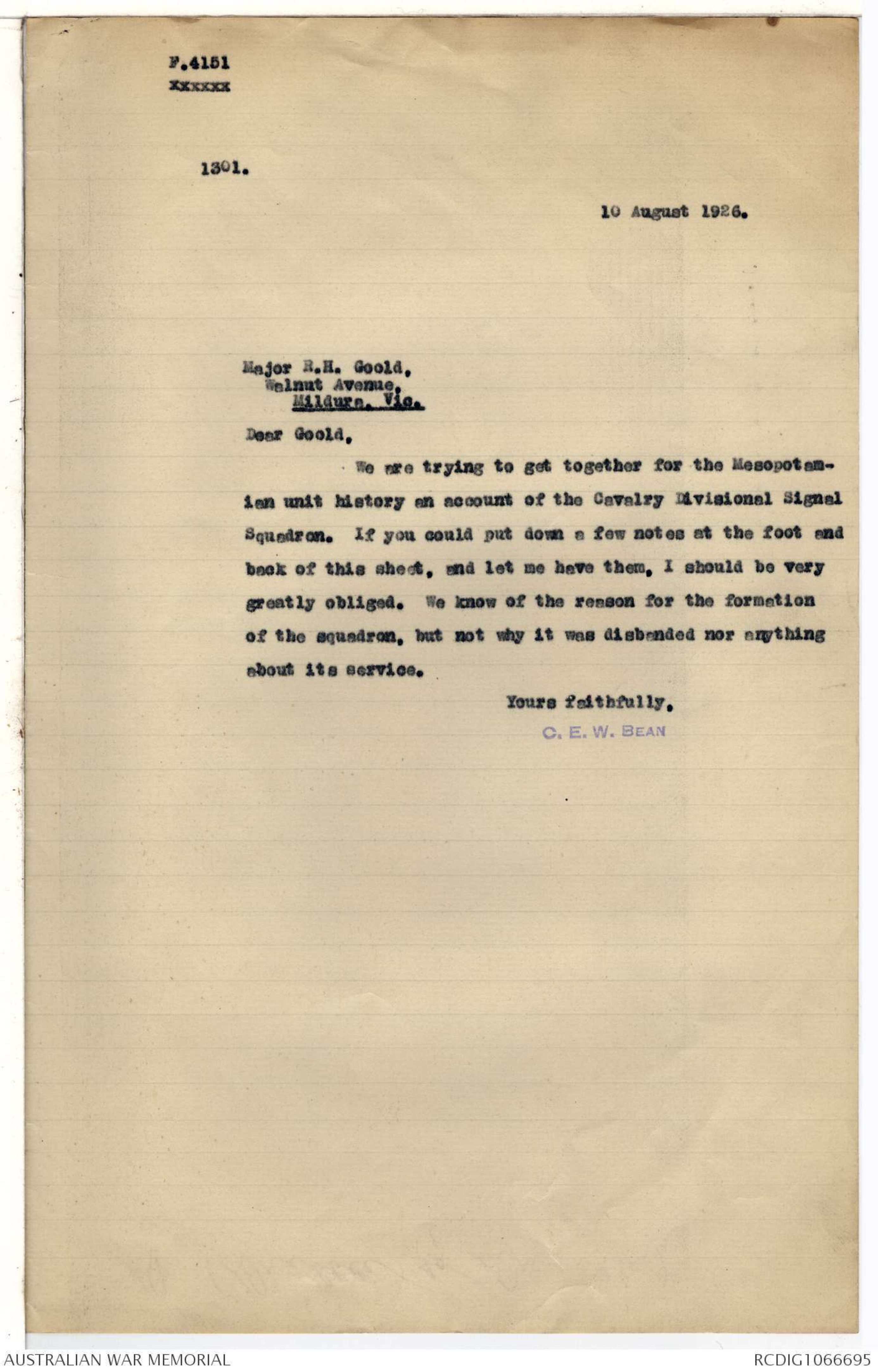
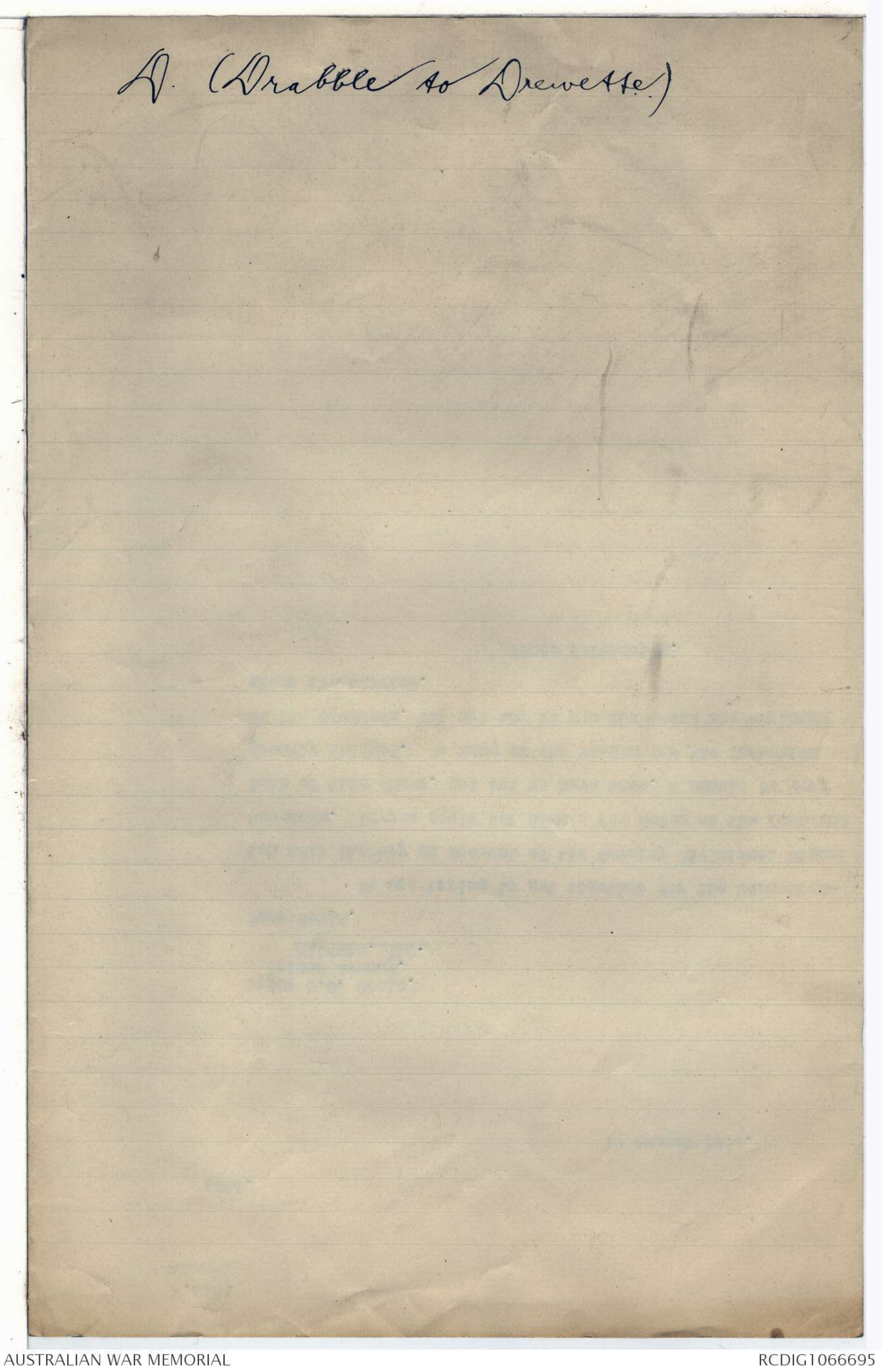
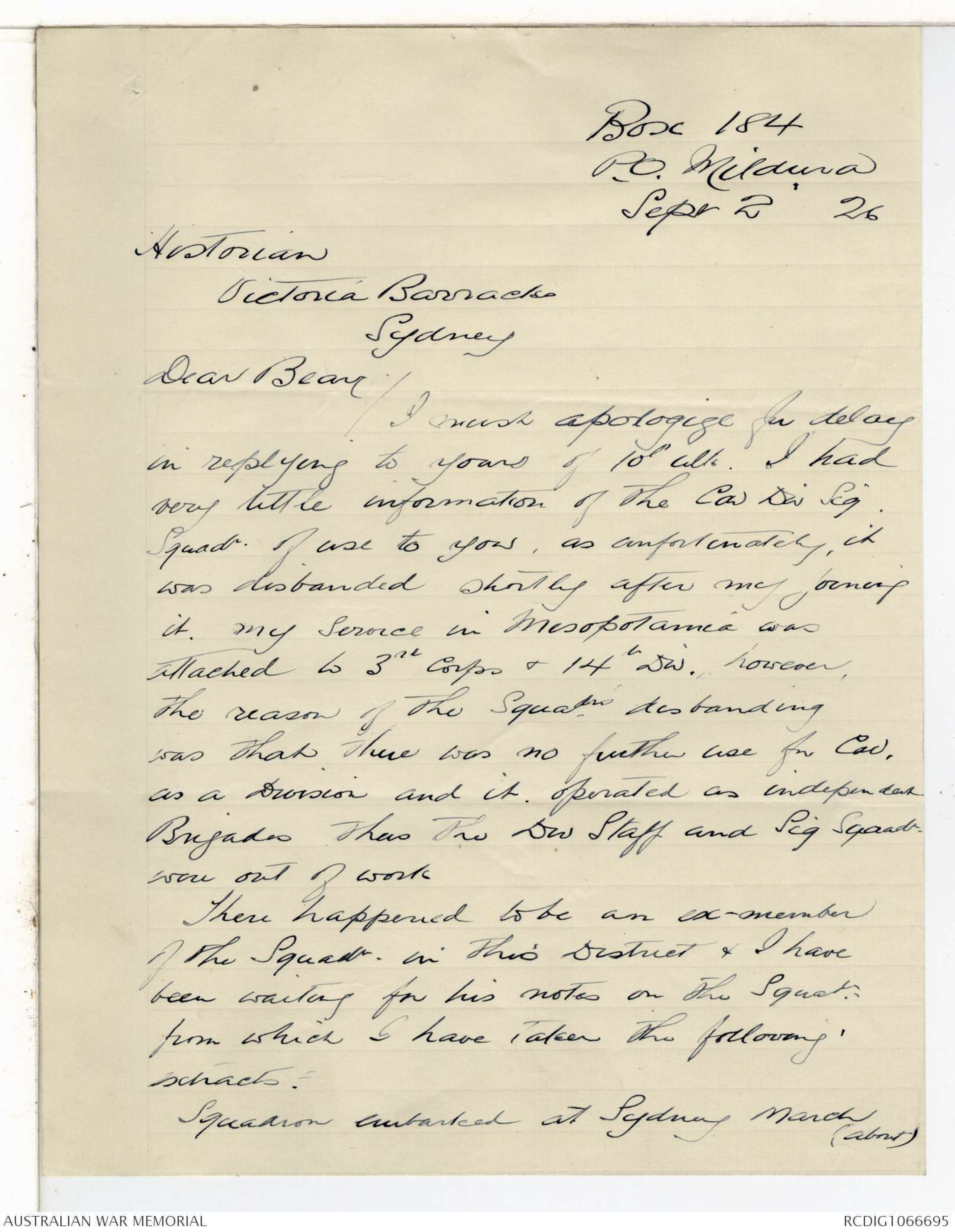
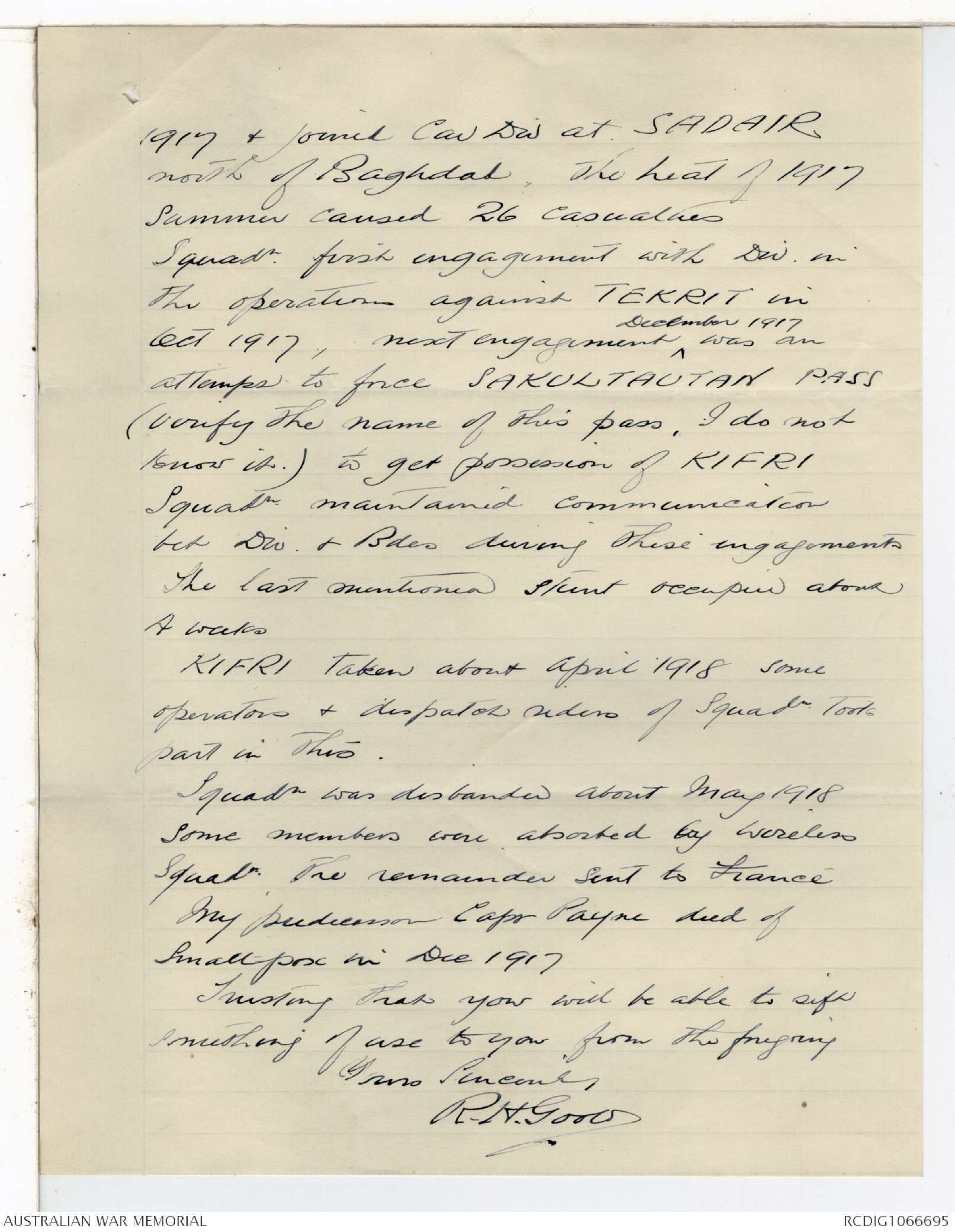

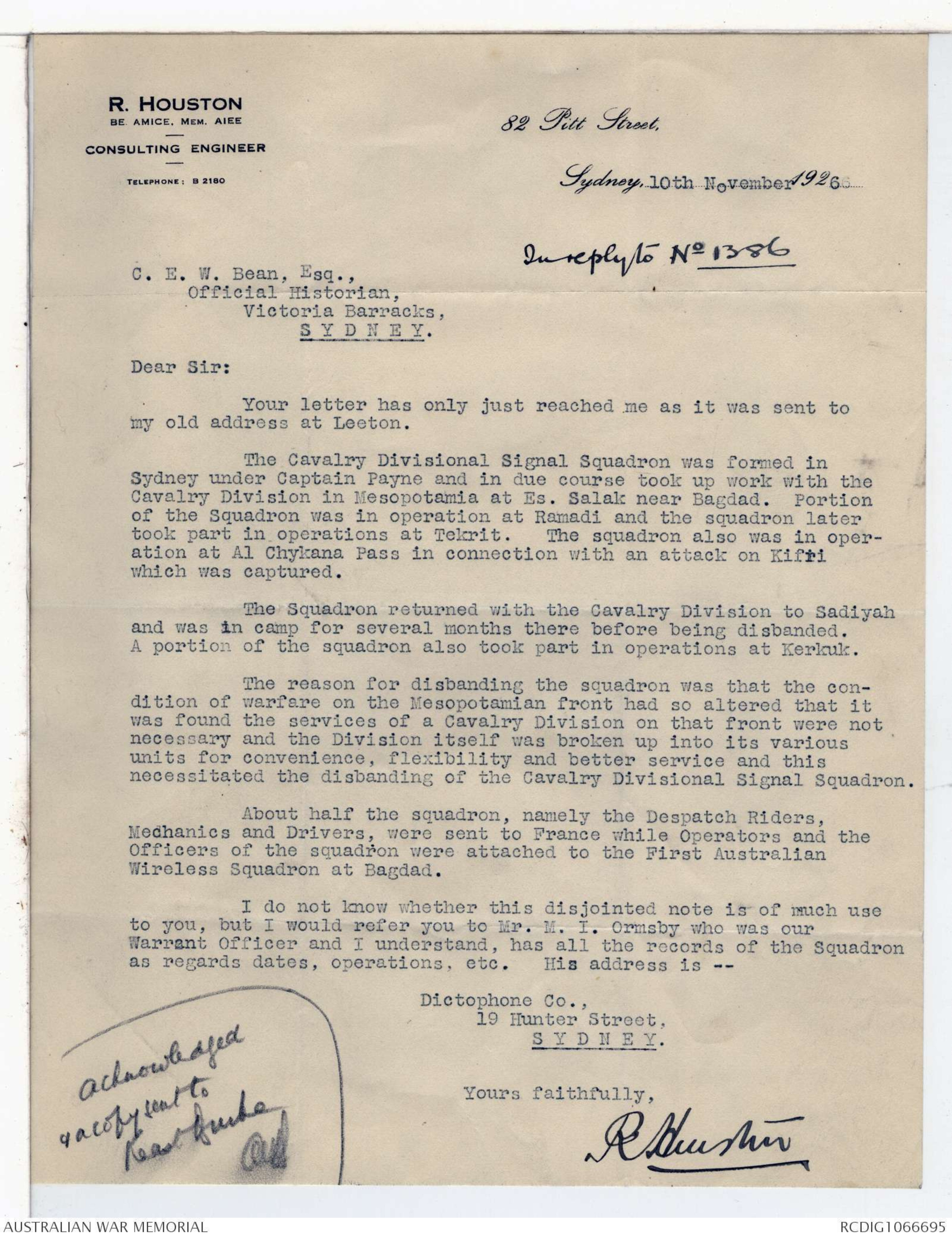
this is the envelope - some still to be done...
not known
at address
14.9.26
[[?]]
H. Payne, Esq.,
116, Chalmers Street,
Sydney.
F.4151.
Tel. -XXXXXX Ext. 81.
COMMONWEALTH OF AUSTRALIA.
No. 1358QUEANBEYAN, NSW
BARRACKS, SYDNEY
3 September 1926.
H. Payne, Esq.,
166, Chalmers Street,
Sydney.
Dear Sir,
In perusing the official records I find that practically
no account has been kept in Australia of the operations
of the signal squadron which was attached to the British
Cavalry division in Mesopotamia, and of which your relative,
Captain William Henry Payne, was the commander. I am wondering
whether by any chance you know of or possess any letters from
Captain Payne containing references to his squadron or the men
composing it? The Mesopotamian Units' association is producing
a small history in which it desires to give some account of
the signal squadron, and a reference to it will also have to be
made in the national official history which I am editing.
If you have any letters and would care to forward them
for my perusal, I should be most grateful and would guarantee
that every care will be taken of them and that, after necessary
extracts have been made, they shall be returned to you.
Yours faithfully,
C.E.W.Bean.
F.4151
xxxxxx
1359.
3 September 1926.
Mrs. E.M. Payne,
"Mimosa Downs",
Walton,
Waikato, N.Z.
Dear Madam,
In perusing the official records I find that
practically no account has been kept in Australia of the
operations of the signal squadron which was attached to the
British cavalry division in Mesopotamia, and of which your
husband, Captain William Henry Payne, was the commander.
I am wondering whether by any chance you know of, or possess,
any letters from Captain Payne containing references to his
squadron or the men composing it? The Mesopotamian Units'
association is producing a small history in which it desires
to give some account of the cavalry divisional signal squadron,
and a reference to it will also have to be made in the
national official history which I am editing.
If you have any letters or records and would care
to forward them for my perusal, I should be most grateful
and would guarantee that every care will be taken of them
and that, after necessary extracts have been made, they
shall be returned to you.
Yours faithfully,
C. E. W. Bean.
8/6/15
NZ&ADiv Admin
F.4151
xxxxxx
10 August 1926.
Major R.H. Goold,
Walnut Avenue,
Mildura, Vic.
Dear Goold,
We are trying to get together for the Mesopotamian
unit history an account of the Cavalry Divisional Signal
Squadron. If you could put down a few notes at the foot and
back of this sheet, and let me have them, I should be very
greatly obliged. We know of the reason for the formation
of the squadron, but no why it was disbanded nor anything
about its service.
Yours faithfully,
C. E. W. Bean.
D (Drabble to Drewette)
Box 184
P.O. Mildura
Sep 2 26
Historian
Victoria Barraacks
Sydney
Dear Bean
I must apologize for delay
in replying to you s of 10th [[?]] I had
very little information of the Cas Div Sig
Squad. of use to you as unfortunately
was disbanded shortly after my joining
it. My Service in Mesopotamia was
attached to 3rd Corps & 14th DW. however
the reason of the Squad disbanding
was that there was no further use for Cad,
as a Division and it operated as independent
Brigades. Thus the DW Staff and Sig Squad
was out of work.
There happened to be an ex-member
of the Squad in this district & I have
been waiting for his notes on the Squad
from which I have taken the following
extracts.
Squadron embarked at Sydney March (about)
1917 & joined Cav Div at SADAIR
north of Baghdad. The heat of 1917
summer caused 26 casualties
Squadn first engagement with Div in
the operation against TEKRIT in
Oct 1917, next engagement ^December 1917 was an
attempt to force SAKULTAUTAN PASS
(verify the name of this pass, I do not
know it.) to get possession of KIFRI
Squadn maintained communication
bet Div, & Bdes during these engagements
the last [[mentioned?]] [[?]] occupied [[about?]]
4 weeks
KIFRI Taken about April 19181 some
operations & [[dispatch?]] [[orders?]] of Squadn took
part in this.
Squadn was disbanded about May 1918
some members were absorbed by wireless
Squadn. The remainder sent to France
My predecessor Capt Payne died of
smallpox in Dec 1917
Trusting that you will be able to [[?]]
something of use to you from the [[fr?]]
Yours Sincerely,
R.H.Goold.
F.4151
xxxxx
1386.
11 September 1926.
Lieutenant R. Houston,
Irrigation Office,
Leeton, N.S.W.
Dear Sir,
We are trying to get together for the Mesopotamian
unit history an account of the Cavalry Divisional Signal
Squadron, of which I understand you were a member. If you
could put down a few notes even on the back of this sheet, and
let me have them, I should be very greatly obliged. We know of
the reason for the formation of the squadron, but no why it
was disbanded nor anything about its service.
Yours faithfully,
C. E. W. Bean.
R. HOUSTON
BE AMICE, MEM. AIEE
CONSULTING ENGINEER
TELEPHONE: B 2180
81 Pitt Street
Sydney, 10th November 1926
In reply to No 1386
C. E. W. Bean, Esq.,
Official Historian,
Victoria Barracks,
SYDNEY.
Dear Sir:
Your letter has only jut reached me as it was sent to
my old address at Leeton.
The Cavalry Divisional Signal Squadron was formed in
Sydney under Captain Payne and in due course took up work with the
Cavalry Division in Mesopotamia at Es. Salak near Bagdad. Portion
of the Squadron was in operation at Ramadi and the squadron later
took part in operations at Tekrit. The squadron also was in operation
at Al Chykana Pass in connection with an attack on Kifri
which was captured.
The Squadron returned with the Cavalry Division to Sadiyah
and was in camp for several months there before being disbanded.
A portion of the squadron also tool part in operations at Kerkuk.
The reason for disbanding the squadron was that the condition
of warfare on the Mesopotamian front had so altered that it
was found the services of the Cavalry Division on that front were not
necessary and the Division itself was broken up into its various
units for convenience, flexibility and better service and this
necessitated the disbanding of the Cavalry Divisional Signal Squadron.
About half the squadron, namely the Despatch Riders,
Mechanics and Drivers, were sent to France while Operators and the
Officers of the squadron were attached to the First Australian
Wireless Squadron at Bagdad.
I do not know whether this disjointed note is of much use
yo you, but I would refer you to Mr. M. I. Ormsby who was our
Warrant Officer and I understand, has all the records of the Squadron
as regards dates, operations, etc. His address is --
Dictophone Co.,
19 Hunter Street,
SYDNEY.
Yours faithfully,
R Houston
**Acknowledged
& a copy sent to
[[Head Guide?]]
CWB
 Sam scott
Sam scottThis transcription item is now locked to you for editing. To release the lock either Save your changes or Cancel.
This lock will be automatically released after 60 minutes of inactivity.